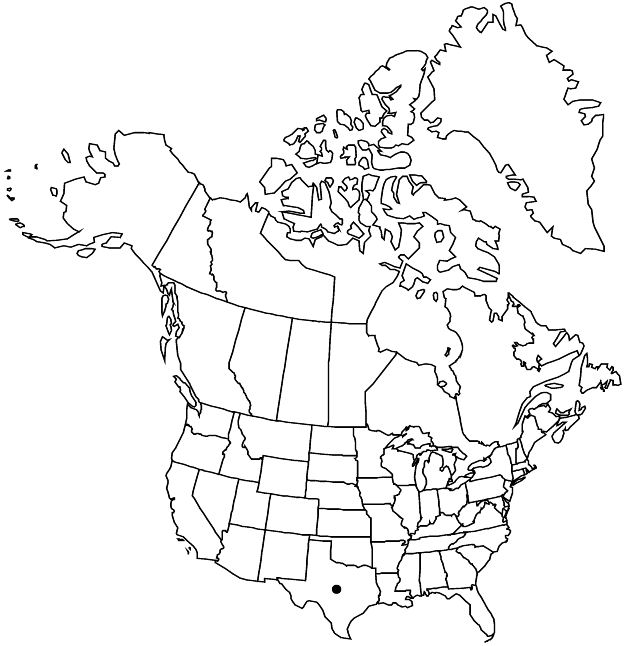Difference between revisions of "Hibiscus dasycalyx"
J. Wash. Acad. Sci. 48: 277, fig. 1. 1958.
FNA>Volume Importer |
imported>Volume Importer |
||
| (6 intermediate revisions by 2 users not shown) | |||
| Line 32: | Line 32: | ||
|distribution=Tex. | |distribution=Tex. | ||
|discussion=<p>Of conservation concern.</p><!-- | |discussion=<p>Of conservation concern.</p><!-- | ||
| − | --><p>R. A. Klips (1995) suggested that Hibiscus dasycalyx might better be treated as a subspecies or variety of H. laevis; R. L. Small (2004) found molecular evidence that it should be maintained as a species. It is known only from Cherokee, Harrison, Houston, and Trinity counties in eastern Texas.</p><!-- | + | --><p>R. A. Klips (1995) suggested that <i>Hibiscus dasycalyx</i> might better be treated as a subspecies or variety of <i>H. laevis</i>; R. L. Small (2004) found molecular evidence that it should be maintained as a species. It is known only from Cherokee, Harrison, Houston, and Trinity counties in eastern Texas.</p><!-- |
| − | --><p>Hibiscus dasycalyx is in the Center for Plant Conservation’s National Collection of Endangered Plants.</p> | + | --><p><i>Hibiscus dasycalyx</i> is in the Center for Plant Conservation’s National Collection of Endangered Plants.</p> |
|tables= | |tables= | ||
|references= | |references= | ||
| Line 42: | Line 42: | ||
-->{{#Taxon: | -->{{#Taxon: | ||
name=Hibiscus dasycalyx | name=Hibiscus dasycalyx | ||
| − | |||
|authority=S. F. Blake & Shiller | |authority=S. F. Blake & Shiller | ||
|rank=species | |rank=species | ||
| Line 57: | Line 56: | ||
|publication year=1958 | |publication year=1958 | ||
|special status=Conservation concern;Endemic | |special status=Conservation concern;Endemic | ||
| − | |source xml=https:// | + | |source xml=https://bitbucket.org/aafc-mbb/fna-data-curation/src/2e0870ddd59836b60bcf96646a41e87ea5a5943a/coarse_grained_fna_xml/V6/V6_478.xml |
|subfamily=Malvaceae subfam. Malvoideae | |subfamily=Malvaceae subfam. Malvoideae | ||
|genus=Hibiscus | |genus=Hibiscus | ||
Latest revision as of 22:21, 5 November 2020
Herbs, perennial, to 2.5 m. Stems glabrous. Leaves: stipules linear-subulate, 1.5–5 mm; petiole 1/2–3/4 blade, glabrous; blade narrowly to broadly triangular-ovate, deeply hastately 3-lobed, 5–12 × 1–14 cm, base cordate to truncate, lobes linear-lanceolate, 3+ times as long as wide, margins coarsely and remotely serrate, apices long-acuminate, surfaces glabrous, nectary absent. Inflorescences solitary flowers in axils of distal leaves. Pedicels jointed medially to distally, 1–3 cm, 1/3–2/3 times subtending petioles, minutely hairy distal to joint; involucellar bractlets 8–10, linear-subulate, 1.8–2.2 cm, margins inconspicuously ciliate, simple-hairy. Flowers ± horizontal; calyx divided 1/3 length, broadly cylindric-campanulate, 1.5–3 cm, larger in fruit, lobes very broadly triangular and subtrullate, apices apiculate, hairy, hairs simple, 1+ mm, underlain by shorter stellate ones, veins sometimes zigzag, nectaries absent; corolla broadly funnelform, petals creamy white, deep red basally, obovate, 4.5–7 × 3–5.5 cm, apical margins repand, sometimes undulate, sometimes minutely hairy abaxially where exposed in bud; staminal column straight, pale pink to white, 2.5–3 cm, length 1/2 petals, bearing filaments nearly throughout, free portions of filaments not secund, 1–2 mm; pollen pale pink to purple; styles cream, 4–10 mm; stigmas cream. Capsules brown, ovoid, 1.6–2.8 cm, apex rounded-truncate, apiculate, hairy. Seeds reddish brown to brown, reniform-globose, 3.5 mm, hairy, hairs reddish brown. 2n = 38.
Phenology: Flowering mid Jun–mid Aug.
Habitat: Open marshy habitats, seasonally wet alluvial soil, edges of ponds
Elevation: 50–100 m
Discussion
Of conservation concern.
R. A. Klips (1995) suggested that Hibiscus dasycalyx might better be treated as a subspecies or variety of H. laevis; R. L. Small (2004) found molecular evidence that it should be maintained as a species. It is known only from Cherokee, Harrison, Houston, and Trinity counties in eastern Texas.
Hibiscus dasycalyx is in the Center for Plant Conservation’s National Collection of Endangered Plants.
Selected References
None.
